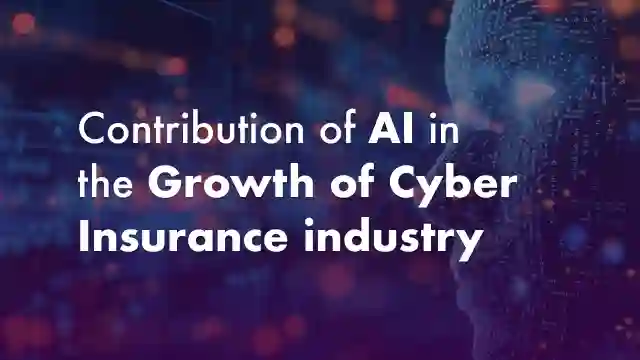Identifying India's Cyber Vulnerabilities
India's critical infrastructure encompasses sectors essential for the nation's economic stability, public safety, and national security. These include:
- Industrial Control Systems (ICS): Power grids, oil refineries, nuclear facilities, and manufacturing plants depend on ICS for monitoring and control. Attacks on these systems could disrupt operations, cause physical damage, and even lead to environmental disasters.
- Financial Systems: Banks, stock exchanges, payment gateways, and insurance companies handle vast amounts of sensitive financial data. Cyberattacks could result in theft of funds, market manipulation, and loss of customer trust.
- Healthcare Infrastructure: Hospitals, medical research institutions, and pharmaceutical companies store and process critical patient data and rely on connected medical devices. Breaches could expose confidential health information, disrupt patient care, and even endanger lives.
- Government and Defense Networks: Government agencies, military installations, and critical databases hold sensitive information related to national security, public services, and citizen data. Cyberattacks could disrupt government operations, expose classified information, and undermine public trust.
- Information and Communication Technology (ICT) Infrastructure: Data centres, telecommunication networks, and internet service providers form the backbone of India's digital economy. Attacks on this infrastructure could disrupt communication, paralyse online services, and expose massive amounts of personal and business data.
These sectors are interconnected, and a successful attack on one could have a cascading effect on others. Additionally, the increasing adoption of cloud computing, Internet of Things (IoT) devices, and mobile technologies further expands the potential attack surface, creating new vulnerabilities that require careful assessment and mitigation.
Assessing Risks and Vulnerabilities
Understanding the specific risks and vulnerabilities within each sector is crucial for developing effective mitigation strategies. This involves a multi-layered approach that goes beyond mere compliance with regulations.
-
Infrastructure Fragility Analysis
- Identifying Single Points of Failure: Pinpointing critical components and systems whose failure could disrupt entire networks or processes.
- Assessing Legacy Systems: Evaluating the risks associated with outdated software, hardware, and protocols that may be difficult to patch or secure.
- Evaluating Third-Party Risks: Analysing the security posture of vendors and suppliers who provide critical services or components to ensure they adhere to robust security practices.
-
Sector-Specific Vulnerability Evaluation
- Power Grids: Conducting penetration testing and vulnerability scanning of SCADA systems, network infrastructure, and connected devices.
- Financial Institutions: Assessing the security of online banking platforms, payment gateways, and transaction processing systems.
- Healthcare: Evaluating the security of electronic health records (EHR) systems, medical devices, and telemedicine platforms.
- Government Agencies: Conducting comprehensive security audits of government networks, websites, and databases to identify and remediate vulnerabilities.
-
Cybersecurity Preparedness Evaluation
- Cybersecurity Culture: Assessing the organisation's overall commitment to cybersecurity, from top leadership to individual employees, and identifying areas for improvement in training and awareness programs.
- Threat Intelligence: Evaluating the organisation's ability to gather, analyse, and utilise threat intelligence to proactively identify and mitigate emerging threats.
- Incident Response: Examining the organisation's incident response plans and capabilities, including communication protocols, containment strategies, and recovery procedures.
- Cyber Insurance: Evaluating the adequacy of cyber insurance coverage to protect against financial losses in the event of a cyberattack.
By adopting a comprehensive and proactive approach to risk assessment, India can strengthen its cyber defences, protect its critical infrastructure, and safeguard its digital future.
Addressing India's Cybersecurity Challenges
India has a foundation of cybersecurity policies and regulations, including the Information Technology Act and the National Cybersecurity Policy. However, the rapidly changing nature of cyber threats necessitates a continuous review and update of these frameworks. Opportunities for enhancement include:
- Comprehensive Data Protection: Developing a robust data protection law that aligns with international standards and addresses the specific challenges of the digital age, such as data localisation and cross-border data flows.
- Critical Infrastructure Resilience: Strengthening regulations specific to the protection of critical infrastructure, including mandatory cybersecurity standards, incident reporting mechanisms, and risk assessment frameworks.
- Effective Enforcement: Ensuring that cybersecurity laws and regulations are effectively enforced through adequate resources, training for law enforcement agencies, and specialised cybercrime courts.
- International Collaboration: Actively participating in international forums and collaborating with other nations to share threat intelligence, coordinate responses to cyberattacks, and develop harmonised cybersecurity standards.
India's rapidly expanding digital landscape necessitates ongoing investment in cybersecurity infrastructure and capabilities. This involves modernising legacy systems, adopting advanced threat detection and mitigation technologies like AI and machine learning, and embracing cloud-based security solutions.
Addressing the shortage of skilled cybersecurity professionals through comprehensive training programs and incentivising careers in this field is paramount. Additionally, fostering a culture of innovation through research and development initiatives and encouraging public-private partnerships can create a more robust and resilient cybersecurity ecosystem for India.
Conclusion: Mitigating Risks and Building Resilience
India's journey towards a secure and resilient digital future requires a collective effort. By embracing a proactive approach and fostering collaboration among government, industry, academia, and civil society, India can effectively address its evolving cyber vulnerabilities. This will pave the way for a robust cyber ecosystem that not only safeguards critical infrastructure and protects sensitive data but also enables the nation to fully harness the transformative power of technology, ensuring a prosperous and secure digital future for all its citizens.







































 Expert advice made easy
Expert advice made easy


